Name Lisette Model Role Photographer | Spouse Evsa Model (m. 1937–1976) Books Lisette Model | |
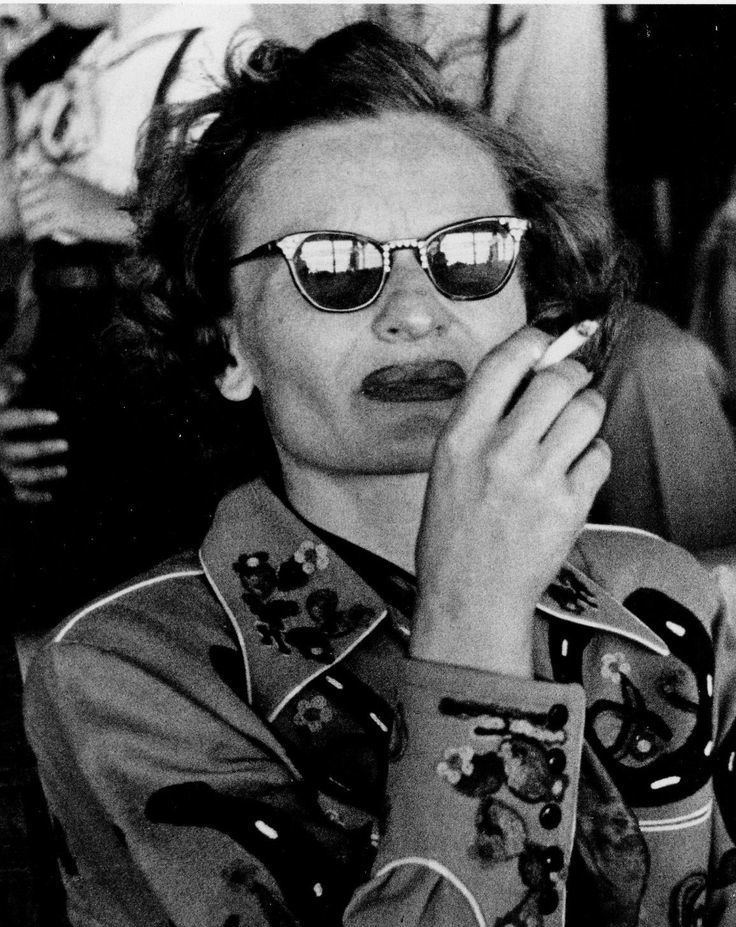 | ||
Died March 30, 1983, New York City, New York, United States Similar People Diane Arbus, Margaret Bourke‑White, Irving Penn, Cecil Beaton | ||
Lisette model discussion part 1
Lisette Model (born Elise Amelie Felicie Stern; November 10, 1901 – March 30, 1983) was an Austrian-born American photographer. Primarily known for the frank humanism of her street photography, exact details of Model's life remain unclear. What is known is that she was well-known and respected in photographic communities during her life. She taught at the New School for Social Research in New York from 1951 up until her death in 1983 with many notable students, the most famous of which was Diane Arbus. Her work has been shown in numerous exhibitions and still resides in several permanent collections, including that of the National Gallery of Canada and the J. Paul Getty Museum.
Contents
- Lisette model discussion part 1
- Lisette Model au Jeu de paume 12
- Early life and education
- First photographs
- Later work and controversy
- Teaching
- Final years
- Awards
- Exhibitions and Collections
- Permanent Collections
- Publications
- References
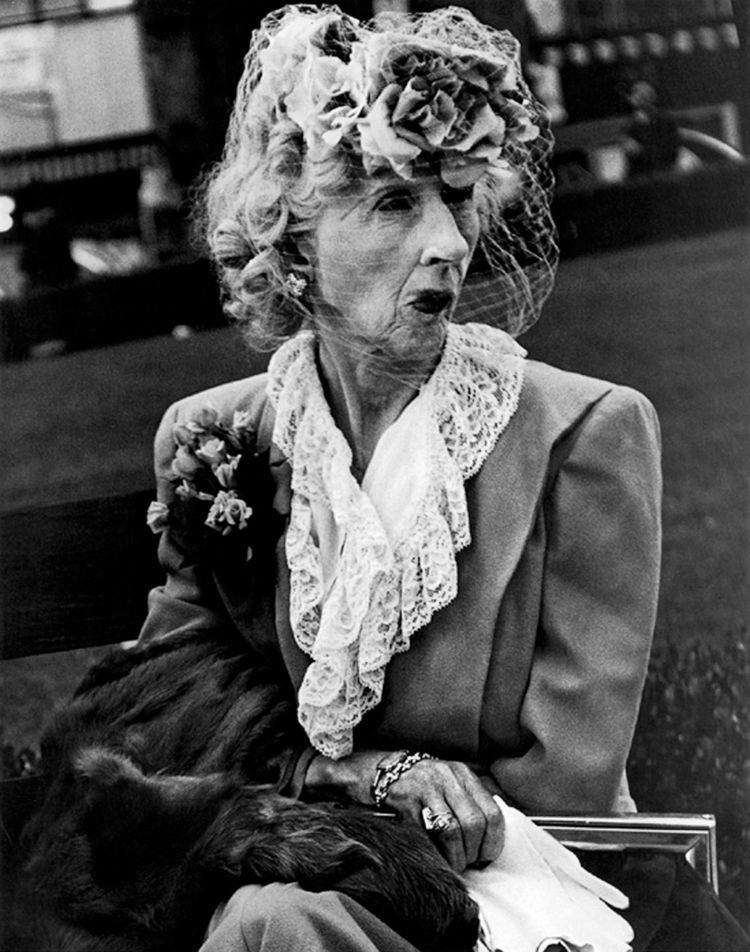
Lisette Model au Jeu de paume (1/2)
Early life and education

Lisette Model was born Elise Amelie Felicie Stern in Vienna, Austria-Hungary. Her father, Victor, was an Italian/Austrian doctor of Jewish descent attached to the Austro-Hungarian Imperial and Royal Army and, later, to the International Red Cross; her mother Felicie was French and Roman Catholic, and Model was baptised into her mother's faith. She had a brother, Salvatór, who was older by one year. Two years after her birth, her parents changed their family name to Seybert, and six years later, her younger sister Olga was born. According to interview testimony from her older brother, she was sexually molested by her father, though the full extent of his abuse remains unclear.
She was primarily educated by a series of private tutors, achieving fluency in three languages. At age 19, she began studying music with composer (and father of her childhood friend Gertrude) Arnold Schönberg, and was familiar to members of his circle. "If ever in my life I had one teacher and one great influence, it was Schönberg," she said.
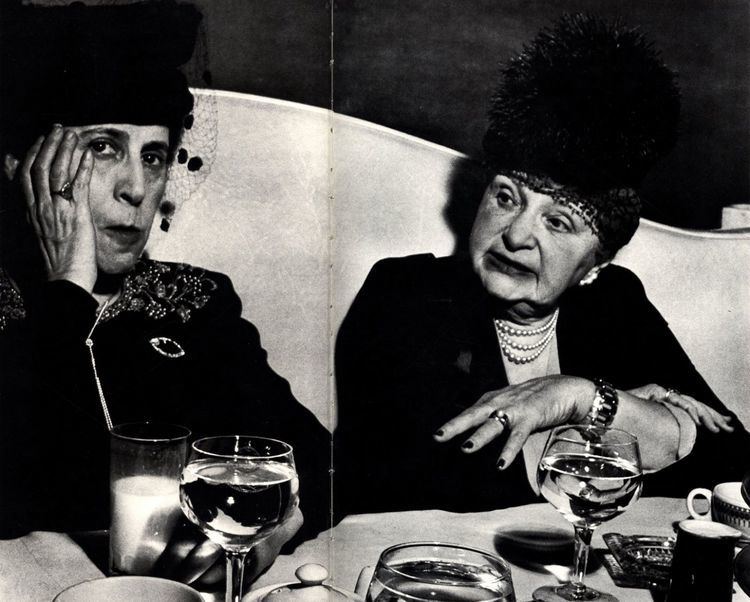
Model left Vienna for Paris after her father's death in 1924 to study voice with Polish soprano Marya Freund. It was during this period that she met her future husband, the Jewish, Russian-born painter Evsa Model (1901-1976), whom she went on to marry in 1937. In 1933, she gave up music and recommitted herself to studying visual art, at first taking up painting as a student of Andre Lhote (whose other students included Henri Cartier-Bresson and George Hoyningen-Huene).
First photographs
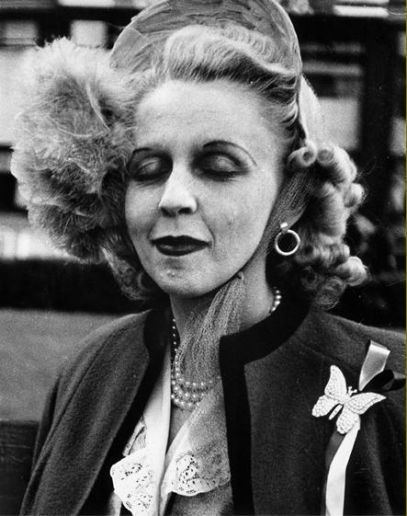
Model bought her first enlarger and camera when she went to Italy. She had little training or interest in photography initially; it was Olga who taught her the basics of photographic technique. Model was most interested in the darkroom process, and wanted to become a darkroom technician. She used her sister as a subject to start her photography. Rogi André later showed Model how to use the Rolleiflex, expanding her practice.
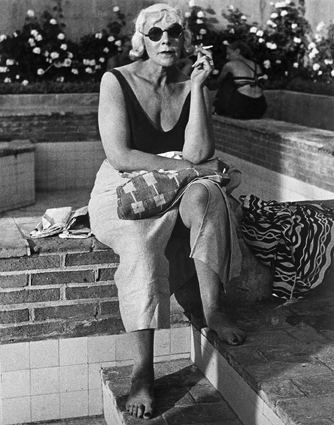
Visiting her mother in Nice in 1934 (she and Olga had emigrated from Vienna several years prior), Model took her camera out on the Promenade des Anglais and made a series of portraits - published in 1935 in the leftist magazine Regards - which are still among her most widely reproduced and exhibited images. These close-cropped, often clandestine portraits of the local privileged class already bore what would become her signature style: close-up, unsentimental and unretouched expositions of vanity, insecurity and loneliness. Model's compositions and closeness to her subjects were achieved by enlarging and cropping her negatives in the darkroom. Additionally, her use of a 2 1/4 inch square negative and larger print size were stylistic choices considered unique at a time when a proliferation of street photographers were embracing what was called the minicam. Later examination of her negatives by archivists reveals that the uncropped images include much of the subjects' physical surroundings. Model's edits in the darkroom eliminate those distractions, tightening the focus on the person and excluding extraneous background information. After the publication of the Promenade des Anglais images, or the "Riviera" series, Model resumed her Paris street photography practice, this time focusing on the poor.
Later work and controversy
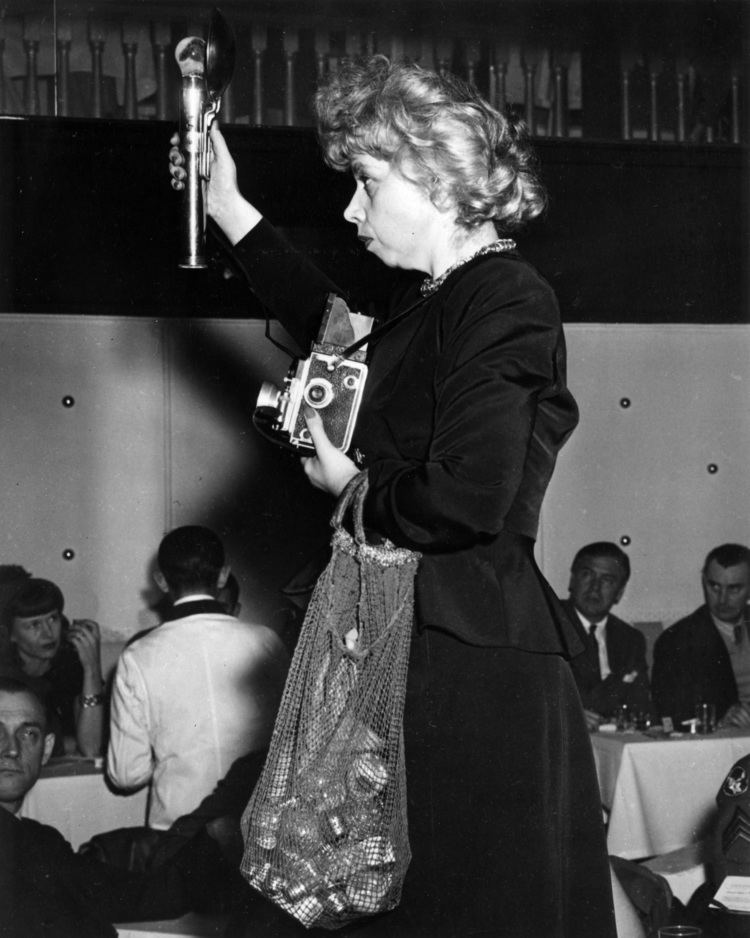
After emigrating to Manhattan in 1937 with her husband, Model worked as a photographer for PM magazine and was regularly published in Harper's Bazaar by editors Carmel Snow and Alexey Brodovitch. She was captivated by the energy of New York City, which she expressed through her separate series Reflections and Running Legs. She also took particular interest in distinct areas of the city, specifically the Lower East Side and Coney Island, where she made hundreds of photographs depicting ordinary American people. Model eventually became a member of the New York Photo League and studied with Sid Grossman until the League's demise in 1951. During its existence, Model was an active League member and served as a judge in membership print competitions. In 1941, the League hosted her first solo exhibition. From 1941 to 1953, she was a freelance photographer and contributed to many publications including Harper's Bazaar, Look, and Ladies' Home Journal.
Model's involvement with the New York Photo League became the cause of much strife for her during the McCarthy Era of the 1950s, when the organization came under scrutiny by the House Un-American Activities Commission for suspected connections to the Communist Party. The League was eventually classified as a communist organization by the FBI, who interviewed Model personally in 1954 and attempted to recruit her as an informant. She refused to cooperate with the Bureau, leading to her name being placed on the National Security Watchlist. Because many clients were reluctant to hire somebody who was under FBI suspicion, Model encountered increased difficulty finding opportunities to work, which played a role in her focus shift towards teaching.
Teaching
Model embarked on a prolific teaching career in the latter half of her life, both institutionally and in private. In 1947, she taught photography at the San Francisco Institute of Fine Arts. In 1951, Model was invited to teach at the New School for Social Research in New York City, where her longtime friend Berenice Abbott was also teaching photography. She also offered private workshops. Model's best known pupil was Diane Arbus, who studied under her in 1957, and Arbus owed much of her early technique to Model. Arbus's husband Allan was actually quoted attributing her development as an artist to Model: "That was Lisette. Three sessions and Diane was a photographer." Larry Fink, John Gossage, Charles Pratt, Eva Rubinstein and Rosalind Solomon were also students of Model's. She continued to teach in New York after the passing of her husband Evsa in 1976, both at the New School and at the International Center of Photography. In 1981 she was awarded an honorary doctorate of fine arts by The New School.
Final years
The first book of Model's photographs was published in 1979 by Aperture and included a preface by Berenice Abbott. Marvin Israel designed the book. Fifty-two photographs made 1937-1970 were reproduced at a large enough scale to correspond with her preferred dimension of 16 x 20 inches. In the later half of her career, Model's work underwent a steep drop in print production. She hadn't stopped shooting photographs; she had simply stopped printing them. Much like some of the hazier details of her biography, the reason for this change has not been conclusively identified. Speculation points toward declining health and self-efficacy, increased energy directed towards teaching, and precarious financial situation as some of the primary causes. Nevertheless, Model continued to shoot and teach until her death. Even in her twilight hours, her work exhibited in Germany, Japan, and the Netherlands, to name a few, and in 1982 she received the Medal of the City of Paris. She died at New York Hospital on March 30, 1983 from heart and respiratory disease.
The estate of Lisette Model is represented by Bruce Silverstein Gallery, New York, New York. This estate was responsible for the release of a mass of information on the notoriously private Model after her death, including 25,000 negatives (many hundreds unprinted), personal letters, lectures, press clippings, and many more sources. The release of this information made up for the previous dearth of accurate details on Model's life, which could be partially attributed to her mistrust of written publications. She refused the release of interviews, and allegedly even sabotaged a manuscript about her by Phillip Lopate. It is suspected that she may have fudged the truth about her past more than once, and her reticence was due to a fear of revealing this misinformation and unclouding her personal history. Regardless, there is now a wealth of knowledge to be found, thanks to the meticulous preservation of her estate.
Awards
Exhibitions and Collections
- 1940 "Sixty Photographs: A Survey of Camera Esthetics" - Museum of Modern Art, New York, NY
- 1941 "Lisette Model" - Photo League, New York, NY
- 1943 "Action Photography" - Museum of Modern Art, New York, NY, "Photographs by Lisette Model" - Art Institute of Chicago
- 1944 "New Yorkers" - Museum of Modern Art, New York, NY, "Art in Progress" - Museum of Modern Art, New York, NY
- 1946 "The Museum Collection of Photography" - Museum of Modern Art, New York, NY
- 1948 "A Survey of Today's Photography" - Museum of Modern Art, New York, NY, "Fifty Photographs by Fifty Photographers" - Museum of Modern Art, New York, NY
- 1949 "Leading Photographers: Lisette Model" - Museum of Modern Art, New York, NY
- 1951 "Twelve Photographers" - Museum of Modern Art, New York, NY
- 1953 "Contemporary American Photography" - Museum of Modern Art, New York, NY
- 1954 "Great Photographers" - Limelight Gallery, New York, NY
- 1955 "The Family of Man" - Museum of Modern Art, New York, NY
- 1957 "70 Photographers Look at New York" - Museum of Modern Art, New York, NY
- 1958 "Photographs from the Museum Collection" - Museum of Modern Art, New York, NY
- 1960 "A Bid for Space" - Museum of Modern Art, New York, NY
- 1963 "A Bid for Space" - Museum of Modern Art, New York, NY
- 1965 "Invitational Exhibition, 10 American Photographers" - University of Wisconsin, Milwaukee
- 1967 "Photography in the 20th Century" - National Gallery of Canada, Ottawa, Canada
- 1969 "The Camera and the Human Facade" - Smithsonian Institution, Washington D.C.
- 1970 "The People Yes" - Floating Foundation of Photography, New York, NY
- 1972 "Brodovitch and His Influence" - Philadelphia College of Art, Philadelphia, PA
- 1973 "Threads and No Threads" - Floating Foundation of Photography, New York, NY
- 1974 "American Masters" - Smithsonian Institution, Washington D.C.
- 1975 "Women of Photography: An Historical Survey" - San Francisco Museum of Modern Art, San Francisco, CA
- 1976 "The Photographer and the Artist" - Sidney Janis Gallery, New York, NY, "Lisette Model Photographs" - Sander Gallery, Washington D.C.
- 1977 "New York: the City and Its People" - A and A Gallery, Yale, New Haven, CN, "Appearances" - Marlborough Gallery, New York, NY, "Three-Woman Show: Diane Arbus, Lisette Model, Rosalind Solomon" - Galerie Zabriskie, Paris, France, "Photographs from the Collection of the Center for Creative Photography" - Center for Creative Photography, Carmel, CA, "Photographs from the Collection #1: America" - Philadelphia Museum of Art, Philadelphia, PA
- 1978 "New Standpoints: Photography 1940-1955" - Museum of Modern Art, New York, NY, "Photographic Crossroads: The Photo League" - National Gallery of Canada, Ottawa, Canada, "The Quality of Presence" - Lunn Gallery, Washington D.C., "How Photography Clicked" - Floating Foundation of Photography, New York, NY
- 1978, Rencontres de la photographie, Arles, France
- 1979 Monograph published by Aperture, "Lisette Model: Photographs" - Vision Gallery, Boston, MA, "August Sander, Lisette Model" - Port Washington Public Library, Port Washington, NY
- 1980 Watari Gallery, Tokyo, Japan, Photographers Gallery, South Yarra, Australia, Ikona Gallery, Venice, Italy, "The Magical Eye: Definitions of Photography" - National Gallery of Canada, Ottawa, Canad
- 1981, PPS Gallery, Hamburg, Germany, "Carl Siembab: A Photographic Patron" - Institute of Contemporary Art, Boston, MA, "Photography of the Fifties: An American Perspective" - Center for Creative Photography, Carmel, CA, "Lisette Model" - Galerie Viviane Esders, Paris, France, "Lisette Model: A Retrospective" - New Orleans Museum of Art, New Orleans, LA
- 1982 "Lisette Model" - Berner-Photo Galerie, Bern, Switzerland, "Lisette Model, A Retrospective" - Museum Folkwang, Essen, Germany
- 1983 "Weegee, Lisette Model, Diane Arbus" - Comfort Gallery, Haverford, PA, "Lisette Model: A Celebration of Genius" - Parsons Exhibition Center, New York, NY, "Lisette Model" - Sander Gallery, New York, NY
- 1984 "Lisette Model/Evsa Model" - Ikona Gallery, Venice, Italy, "Lisette Model" - Jane Corkin Gallery, Toronto, Canada
- 1985 "The New York School Photographs: Part One" - Corcoran Gallery of Art, Washington D.C., "The New York School Photographs: Part Two" - Corcoran Gallery of Art, Washington D.C., "Masters of the Street II" - Museum of Photographic Arts, San Diego, CA
- 1987 "Vintage Women" - Photocollect, New York, NY
- 1988 "Lisette Model: Vintage Photographs" - Germans Van Eck Gallery, New York, NY
- 1989 "Noted Women Photographers of the 20s and 30s" - Jan Kesner Gallery, Los Angeles, CA, "New York: Photography between the Wars" - Metropolitan Museum of Art, New York, NY
- 1990 "Lisette Model" - National Gallery of Canada, Ottawa, Canada
- 1991 "Lisette Model" - San Francisco Museum of Modern Art, San Francisco, CA
- 1991 "Lisette Model" - International Center of Photography, New York, NY
- 1991 "Lisette Model: Daring to See" - The J. Paul Getty Museum, Malibu, CA
- 1992 "Lisette Model: Photographien, 1933–1983" - Museum Ludwig, Cologne, Germany
- 1997 "Lisette Model: Selections from the Collection of the International Center of Photography" - Paine Webber Art Gallery, New York, NY
- 2000 "Lisette Model" - Kunsthalle Wien, Vienna, Austria
- 2001 "Lisette Model" - Fotomuseum Winterthur, Zurich, Switzerland
- 2002 "Lisette Model" - Baudoin Lebon Gallery, Paris, France, "Lisette Model" - L'Espace 14-16 Verneuil, Paris, France
- 2003 "Lisette Model" - Maurice Keitelman, Paris, France"A Clear Vision: Photographic Works from the F. C. Gundlach Collection" - International House of Photography, Hamburg, Germany
- 2006 "The Streets of New York: American Photographs from the Collection, 1938-1958" - National Gallery of Art, Washington D.C.
- 2007 "Lisette Model and Her Successors" - Aperture Gallery, New York, NY
- 2008 "Lisette Model & Her Successors" - Galleria Carla Sozzani, Milan, Italy
- 2010 "Lisette Model" - The Galerie nationale du Jeu de Paume, Paris, France
